Septic conditions. Sepsis: Understanding Symptoms, Causes, and Risk Factors of This Life-Threatening Condition
What are the symptoms of sepsis. How does sepsis progress to septic shock. What infections commonly lead to sepsis. Who is at higher risk of developing sepsis. What complications can arise from sepsis.
Understanding Sepsis: A Potentially Fatal Response to Infection
Sepsis is a grave medical condition that occurs when the body’s response to infection spirals out of control. Instead of fighting off the infection, the body’s immune system turns against itself, causing widespread inflammation and potentially leading to organ failure. This life-threatening condition can rapidly progress to septic shock, characterized by a dramatic drop in blood pressure that can cause severe damage to vital organs such as the lungs, kidneys, and liver.
The severity of sepsis cannot be overstated. When left untreated or if treatment is delayed, sepsis can lead to death. However, early recognition and prompt medical intervention significantly improve the chances of survival.

Recognizing the Signs: Key Symptoms of Sepsis
Identifying sepsis early is crucial for effective treatment. However, the symptoms of sepsis can be nonspecific and may vary from person to person. It’s important to note that sepsis may present differently in children compared to adults. Here are the primary symptoms to watch for:
- Changes in mental status or confusion
- Rapid, shallow breathing
- Unexplained sweating
- Feeling lightheaded or dizzy
- Shivering or feeling very cold
- Symptoms specific to the underlying infection (e.g., painful urination in urinary tract infections or worsening cough in pneumonia)
Are these symptoms always indicative of sepsis? While these symptoms can be associated with sepsis, they may also be present in other conditions. It’s crucial to consider the overall context, especially if there’s a known infection or recent illness.
The Progression to Septic Shock: A Medical Emergency
As sepsis advances, it can lead to a more severe condition known as septic shock. This stage is characterized by a significant drop in blood pressure that can be life-threatening. The progression to septic shock substantially increases the risk of mortality.
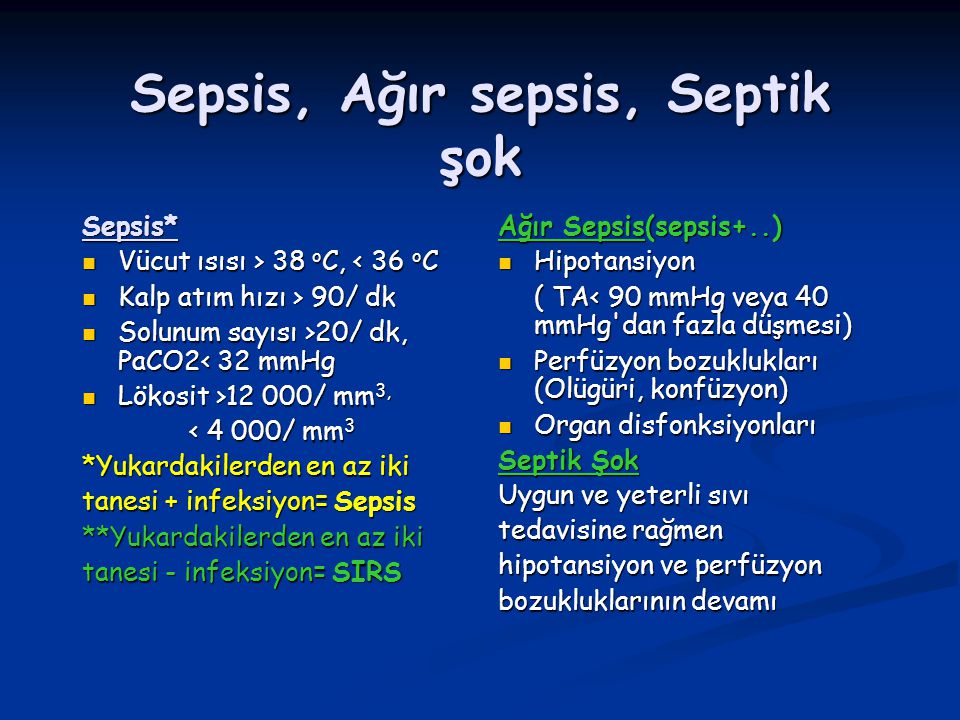
Symptoms of septic shock include:
- Inability to stand up
- Extreme drowsiness or difficulty staying awake
- Severe changes in mental status, including extreme confusion
Can septic shock occur suddenly? While sepsis typically progresses over time, the onset of septic shock can be rapid, emphasizing the need for immediate medical attention when symptoms are observed.
The Origins of Sepsis: Common Infectious Culprits
Sepsis can result from any type of infection, whether bacterial, viral, or fungal. However, certain infections are more commonly associated with the development of sepsis:
- Pneumonia and other lung infections
- Urinary tract infections, including those affecting the kidneys and bladder
- Infections of the digestive system
- Bloodstream infections (bacteremia)
- Infections at catheter sites
- Infections in wounds or burns
Is it possible for a minor infection to lead to sepsis? While less common, even seemingly minor infections can potentially progress to sepsis, especially in individuals with compromised immune systems or other risk factors.

Identifying High-Risk Groups: Who is More Susceptible to Sepsis?
While sepsis can affect anyone, certain factors increase the likelihood of an infection progressing to sepsis:
- Advanced age (over 65 years)
- Infancy
- Compromised immune system (e.g., cancer patients, individuals with HIV)
- Chronic health conditions (diabetes, kidney disease, COPD)
- Extended hospital stays, especially in intensive care units
- Presence of invasive medical devices (intravenous catheters, breathing tubes)
- Recent antibiotic treatment (within the last 90 days)
- Use of corticosteroids, which can suppress immune function
Does having these risk factors guarantee the development of sepsis? While these factors increase the risk, they don’t guarantee that sepsis will occur. However, individuals with these risk factors should be particularly vigilant about monitoring for signs of infection and seeking prompt medical attention when necessary.
The Far-Reaching Impact: Complications of Sepsis
Sepsis can have severe and long-lasting effects on the body. As the condition progresses, vital organs may not receive adequate blood supply, leading to potential organ dysfunction or failure. Some of the complications associated with sepsis include:
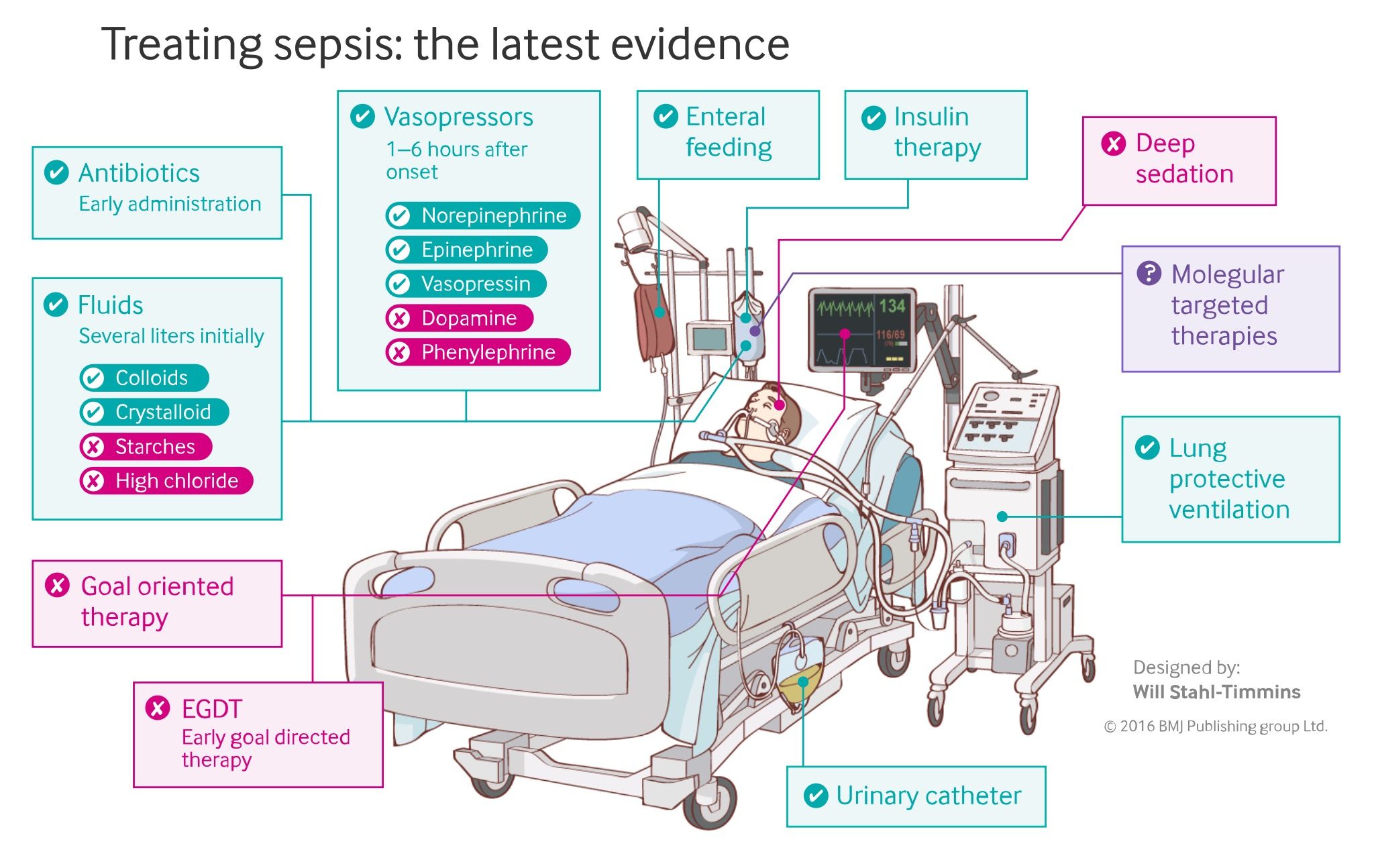
- Abnormal blood clotting
- Tissue damage or death
- Organ failure (e.g., kidney failure, respiratory failure)
- Increased susceptibility to future infections
While many individuals recover from mild sepsis, the mortality rate for septic shock remains alarmingly high, ranging from 30% to 40%. Even after recovery, an episode of severe sepsis can leave lasting effects and increase vulnerability to future infections.
Long-Term Effects of Sepsis
Survivors of sepsis may experience long-term physical and psychological effects, collectively known as post-sepsis syndrome. These effects can include:
- Chronic fatigue and weakness
- Cognitive impairments, including memory issues
- Mood changes and anxiety
- Ongoing pain or discomfort
- Increased risk of recurrent infections
How long can these effects last? The duration of post-sepsis syndrome can vary greatly among individuals, lasting from a few months to several years. Some survivors may experience permanent changes in their health and quality of life.
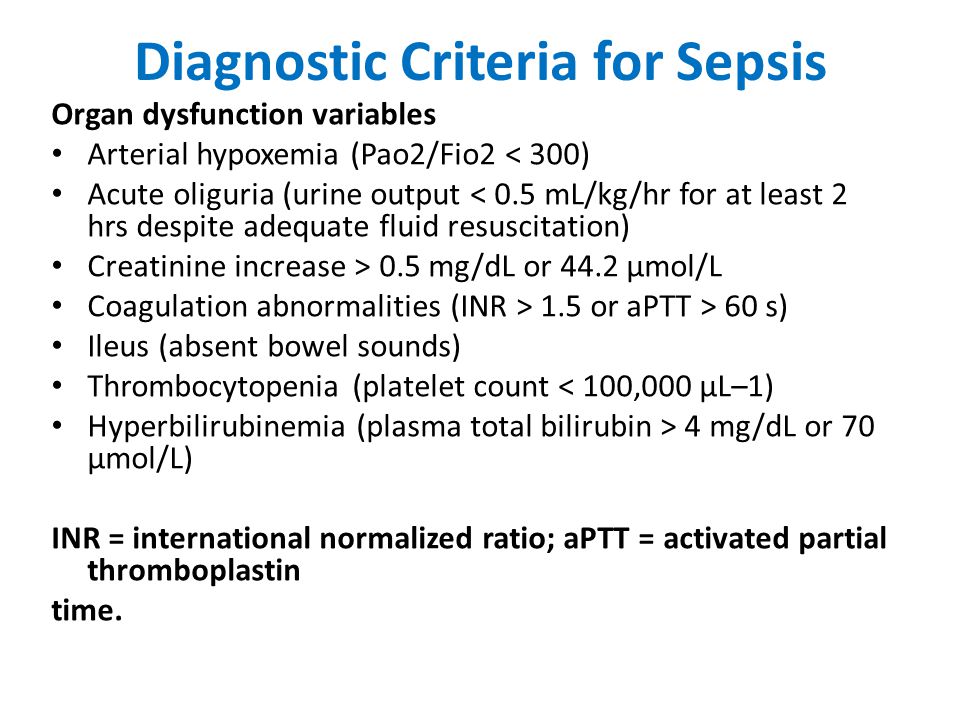
Seeking Medical Attention: When to Act
Given the potential severity of sepsis, it’s crucial to seek medical attention promptly if you suspect you or someone else may have sepsis. Here are some guidelines:
- If you have symptoms of sepsis or an infection that isn’t improving, consult a healthcare provider.
- For symptoms such as confusion or rapid breathing, seek emergency care immediately.
- If you have risk factors for sepsis and develop signs of infection, don’t hesitate to seek medical evaluation.
Is it better to err on the side of caution when it comes to sepsis? Absolutely. The potential consequences of untreated sepsis far outweigh the inconvenience of a potentially unnecessary medical visit. When in doubt, it’s always better to seek professional medical advice.
Advances in Sepsis Management: Current Treatment Approaches
The management of sepsis has evolved significantly in recent years, with a focus on early recognition and aggressive treatment. Current approaches typically include:
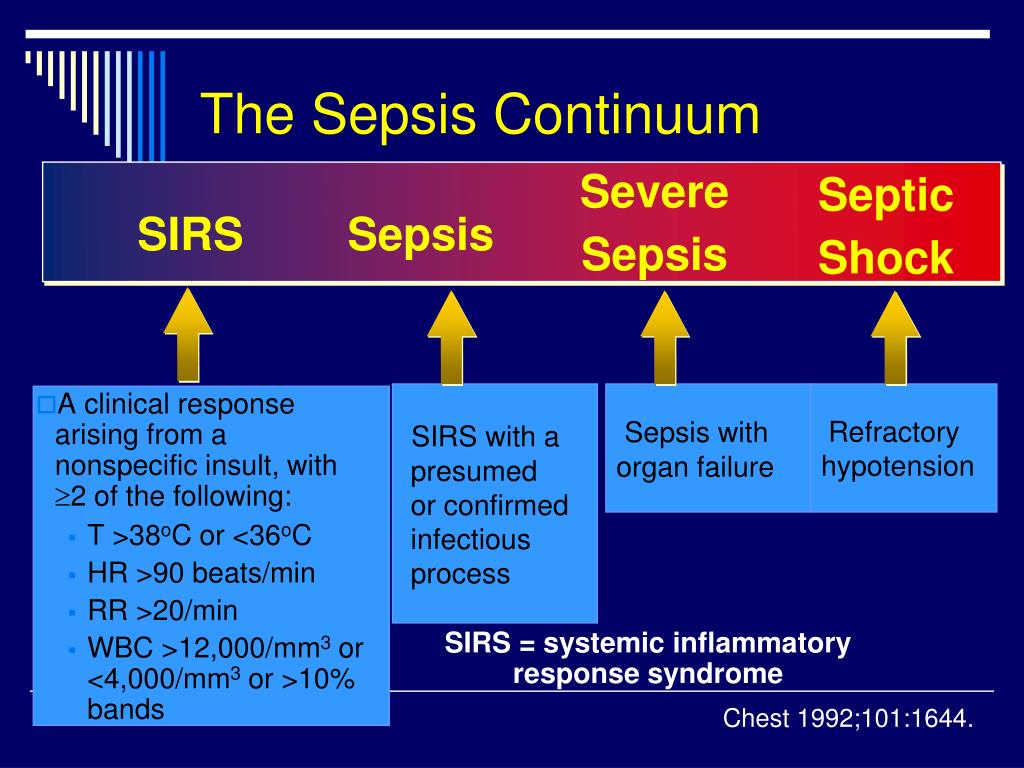
- Prompt administration of broad-spectrum antibiotics
- Intravenous fluids to support blood pressure and organ function
- Oxygen therapy or mechanical ventilation if needed
- Medications to support blood pressure (vasopressors)
- Careful monitoring and support of organ function
- Treatment of the underlying infection
In severe cases, additional interventions such as dialysis for kidney failure or surgery to remove infected tissue may be necessary.
The Importance of Time in Sepsis Treatment
In sepsis management, time is of the essence. The concept of the “golden hour” in sepsis treatment emphasizes the critical importance of initiating appropriate therapy as soon as possible after the onset of symptoms. Studies have shown that each hour of delay in administering antibiotics is associated with an increase in mortality.
How quickly should treatment begin? Ideally, antibiotic therapy should be initiated within one hour of recognizing sepsis. This rapid response can significantly improve outcomes and reduce the risk of progression to septic shock.

Preventing Sepsis: Strategies for Reducing Risk
While it’s not always possible to prevent sepsis, there are several strategies that can help reduce the risk:
- Practice good hygiene, including regular handwashing
- Keep wounds clean and watch for signs of infection
- Stay up to date with vaccinations, particularly for pneumonia and influenza
- Manage chronic health conditions effectively
- Seek prompt medical attention for infections
- Follow prescribed antibiotic regimens completely
For individuals at higher risk of sepsis, such as those with chronic health conditions or compromised immune systems, extra vigilance and regular check-ups with healthcare providers are crucial.
The Role of Antibiotic Stewardship
While antibiotics are crucial in treating sepsis, their overuse can contribute to antibiotic resistance, potentially making future infections more difficult to treat. Antibiotic stewardship programs aim to promote the appropriate use of antibiotics, ensuring they are used only when necessary and in the correct manner.
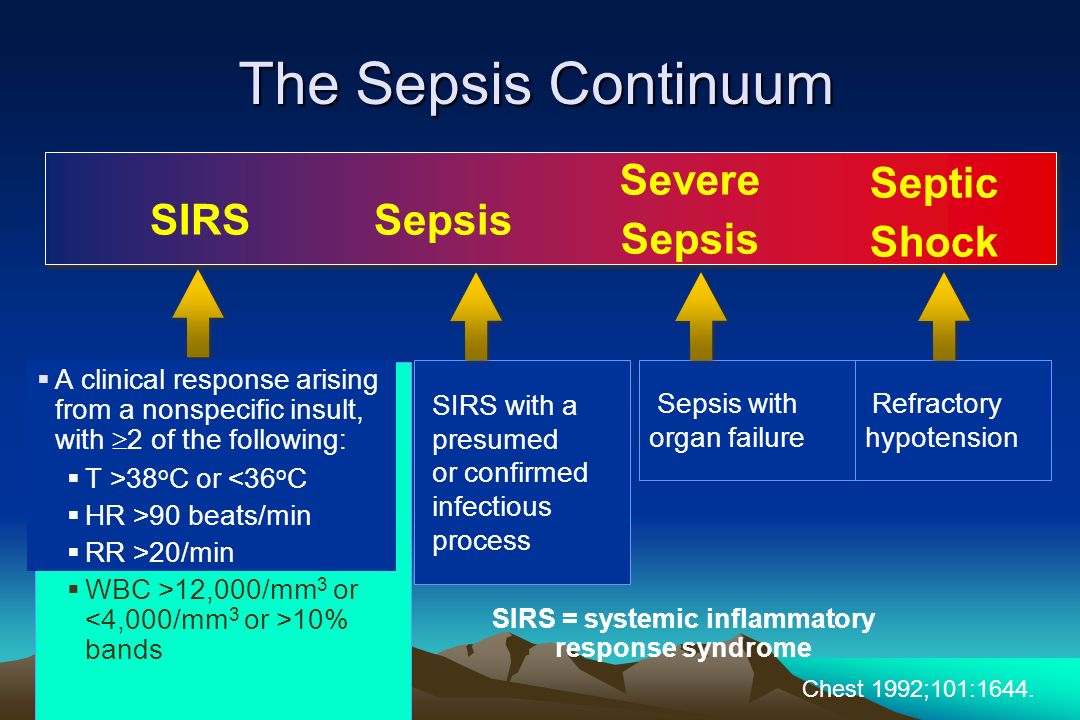
How can individuals contribute to antibiotic stewardship? By not pressuring healthcare providers for antibiotics when they’re not necessary (such as for viral infections), completing prescribed antibiotic courses as directed, and never sharing or using leftover antibiotics.
Sepsis Awareness: The Importance of Education
Despite its prevalence and severity, sepsis remains a condition that many people are unfamiliar with. Increasing public awareness about sepsis is crucial for improving outcomes. Key points in sepsis education include:
- Recognition of sepsis symptoms
- Understanding the urgency of seeking medical care
- Awareness of risk factors and prevention strategies
- Dispelling myths and misconceptions about sepsis
Healthcare providers also play a vital role in sepsis education, both for their patients and within the medical community. Ongoing training and implementation of sepsis protocols can lead to faster recognition and more effective treatment of sepsis cases.
The Global Impact of Sepsis
Sepsis is a significant global health concern, affecting millions of people worldwide each year. It’s estimated that sepsis accounts for at least 11 million deaths annually, making it a leading cause of death globally. In many cases, these deaths are preventable with proper awareness, early recognition, and prompt treatment.
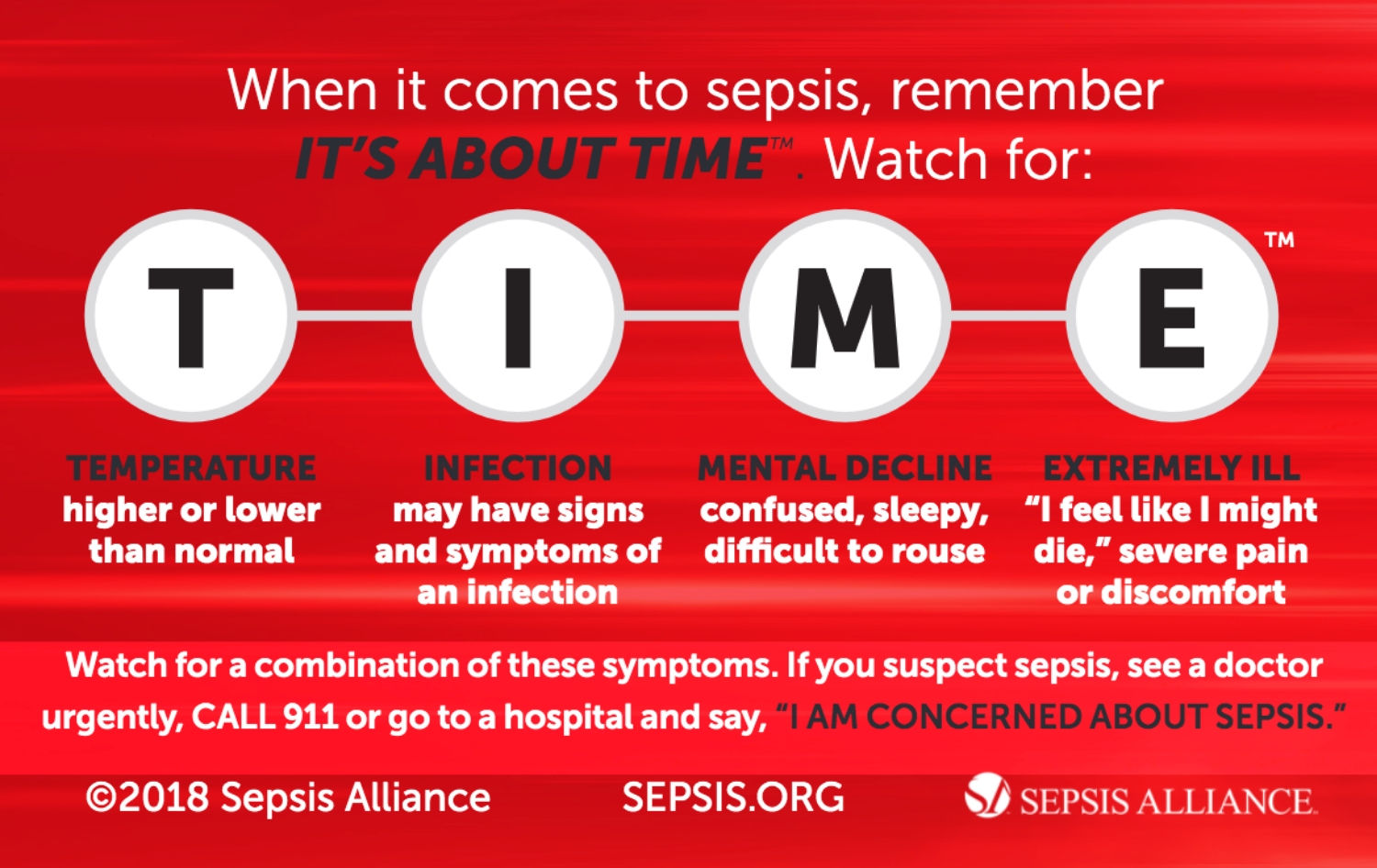
How does sepsis impact different parts of the world? The burden of sepsis is particularly high in low- and middle-income countries, where access to healthcare and resources for managing sepsis may be limited. Efforts to combat sepsis globally include improving healthcare infrastructure, increasing access to essential medicines and diagnostic tools, and implementing standardized sepsis protocols.
Future Directions in Sepsis Research and Treatment
As our understanding of sepsis continues to evolve, researchers are exploring new avenues for diagnosis, treatment, and prevention. Some promising areas of research include:
- Biomarkers for early sepsis detection
- Personalized treatment approaches based on individual patient characteristics
- Novel therapies targeting the immune response in sepsis
- Artificial intelligence for predicting sepsis onset and guiding treatment
- Strategies for preventing and managing post-sepsis syndrome
These advancements hold the potential to further improve sepsis outcomes and reduce the global burden of this life-threatening condition.
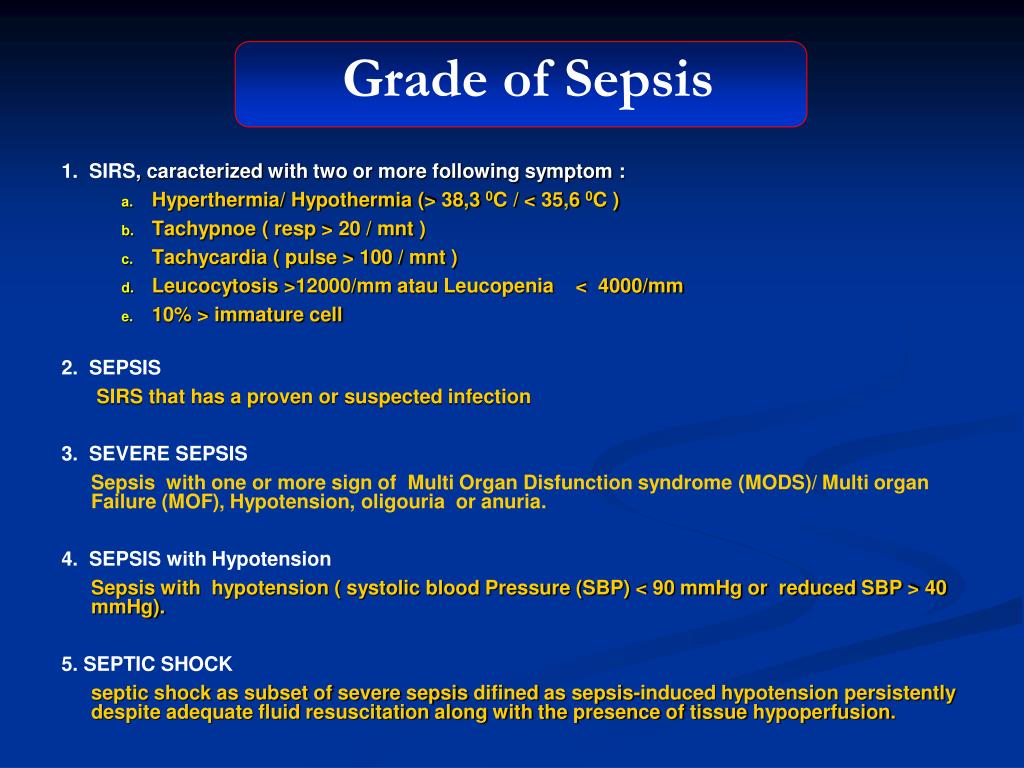
The Role of Genomics in Sepsis Management
Genomic research is opening new possibilities in understanding individual susceptibility to sepsis and tailoring treatments. Studies have identified genetic variants that may influence a person’s risk of developing sepsis or their response to specific treatments.
How might genomics change sepsis care in the future? As our understanding grows, it may become possible to use genetic information to predict an individual’s risk of sepsis, guide preventive measures, and select the most effective treatments based on a patient’s genetic profile.
In conclusion, sepsis remains a significant health challenge, but advancements in understanding, treatment, and prevention offer hope for improved outcomes. By raising awareness, promoting early recognition and treatment, and continuing research efforts, we can work towards reducing the impact of this deadly condition on individuals and communities worldwide.
Sepsis – Symptoms & causes
Overview
Sepsis is a serious condition in which the body responds improperly to an infection. The infection-fighting processes turn on the body, causing the organs to work poorly.
Sepsis may progress to septic shock. This is a dramatic drop in blood pressure that can damage the lungs, kidneys, liver and other organs. When the damage is severe, it can lead to death.
Early treatment of sepsis improves chances for survival.
Products & Services
Symptoms
Symptoms of sepsis
Symptoms of sepsis may include:
- Change in mental status.
- Fast, shallow breathing.
- Sweating for no clear reason.
- Feeling lightheaded.
- Shivering.
- Symptoms specific to the type of infection, such as painful urination from a urinary tract infection or worsening cough from pneumonia.

Symptoms of sepsis are not specific. They can vary from person to person, and sepsis may appear differently in children than in adults.
Symptoms of septic shock
Sepsis may progress to septic shock. Septic shock is a severe drop in blood pressure. Progression to septic shock raises the risk of death. Symptoms of septic shock include:
- Not being able to stand up.
- Strong sleepiness or hard time staying awake.
- Major change in mental status, such as extreme confusion.
When to see a doctor
Any infection could lead to sepsis. Go to a health care provider if you have symptoms of sepsis or an infection or wound that isn’t getting better.
Symptoms such as confusion or fast breathing need emergency care.
Causes
Any type of infection can lead to sepsis. This includes bacterial, viral or fungal infections. Those that more commonly cause sepsis include infections of:
- Lungs, such as pneumonia.

- Kidney, bladder and other parts of the urinary system.
- Digestive system.
- Bloodstream.
- Catheter sites.
- Wounds or burns.
Risk factors
Some factors that increase the risk infection will lead to sepsis include:
- People over age 65.
- Infancy.
- People with lower immune response, such as those being treated for cancer or people with human immunodeficiency virus (HIV).
- People with chronic diseases, such as diabetes, kidney disease or chronic obstructive pulmonary disease (COPD).
- Admission to intensive care unit or longer hospital stays.
- Devices that go in the body, such as catheters in the vein, called intravenous, or breathing tubes.
- Treatment with antibiotics in the last 90 days.
- A condition that requires treatment with corticosteroids, which can lower immune response.
Complications
As sepsis worsens, vital organs, such as the brain, heart and kidneys, don’t get as much blood as they should. Sepsis may cause atypical blood clotting. The resulting small clots or burst blood vessels may damage or destroy tissues.
Sepsis may cause atypical blood clotting. The resulting small clots or burst blood vessels may damage or destroy tissues.
Most people recover from mild sepsis, but the mortality rate for septic shock is about 30% to 40%. Also, an episode of severe sepsis raises the risk for future infections.
Sepsis – Symptoms & causes
Overview
Sepsis is a serious condition in which the body responds improperly to an infection. The infection-fighting processes turn on the body, causing the organs to work poorly.
Sepsis may progress to septic shock. This is a dramatic drop in blood pressure that can damage the lungs, kidneys, liver and other organs. When the damage is severe, it can lead to death.
Early treatment of sepsis improves chances for survival.
Products & Services
Symptoms
Symptoms of sepsis
Symptoms of sepsis may include:
- Change in mental status.

- Fast, shallow breathing.
- Sweating for no clear reason.
- Feeling lightheaded.
- Shivering.
- Symptoms specific to the type of infection, such as painful urination from a urinary tract infection or worsening cough from pneumonia.
Symptoms of sepsis are not specific. They can vary from person to person, and sepsis may appear differently in children than in adults.
Symptoms of septic shock
Sepsis may progress to septic shock. Septic shock is a severe drop in blood pressure. Progression to septic shock raises the risk of death. Symptoms of septic shock include:
- Not being able to stand up.
- Strong sleepiness or hard time staying awake.
- Major change in mental status, such as extreme confusion.
When to see a doctor
Any infection could lead to sepsis. Go to a health care provider if you have symptoms of sepsis or an infection or wound that isn’t getting better.
Symptoms such as confusion or fast breathing need emergency care.
Causes
Any type of infection can lead to sepsis. This includes bacterial, viral or fungal infections. Those that more commonly cause sepsis include infections of:
- Lungs, such as pneumonia.
- Kidney, bladder and other parts of the urinary system.
- Digestive system.
- Bloodstream.
- Catheter sites.
- Wounds or burns.
Risk factors
Some factors that increase the risk infection will lead to sepsis include:
- People over age 65.
- Infancy.
- People with lower immune response, such as those being treated for cancer or people with human immunodeficiency virus (HIV).
- People with chronic diseases, such as diabetes, kidney disease or chronic obstructive pulmonary disease (COPD).
- Admission to intensive care unit or longer hospital stays.
- Devices that go in the body, such as catheters in the vein, called intravenous, or breathing tubes.

- Treatment with antibiotics in the last 90 days.
- A condition that requires treatment with corticosteroids, which can lower immune response.
Complications
As sepsis worsens, vital organs, such as the brain, heart and kidneys, don’t get as much blood as they should. Sepsis may cause atypical blood clotting. The resulting small clots or burst blood vessels may damage or destroy tissues.
Most people recover from mild sepsis, but the mortality rate for septic shock is about 30% to 40%. Also, an episode of severe sepsis raises the risk for future infections.
Sepsis
Sepsis
- Health Issues »
- A
- B
- C
- D
- D
- E
- Y
- W
- W
- I
- R
- L
- M
- H
- O
- P
- R
- S
- T
- U
- F
- X
- C
- H 900 05
- W
- W
- L
- S
- B
- E
- S
- I
- Popular Topics
- Air pollution
- Coronavirus disease (COVID-19)
- Hepatitis
- Data and statistics »
- News bulletin
- The facts are clear
- Publications
- Find Country »
- A
- B
- C
- D
- L
- E
- Y
- W
- W
- I
- Y
- K
- L 90 005
- M
- H
- O
- R
- R
- C
- T
- Y
- F
- X
- C
- H
- W
- W
- L
- Y
- b
- e
- i
- i
- WHO in countries »
- Reporting
- Regions »
- Africa
- America
- Southeast Asia
- Europe
- Eastern Mediterranean
- Western Pacific
- Media Center
- Press releases
- Statements
- Media messages
- Comments
- Reporting
- Online Q&A
- Events
- Photo reports
- Case Studies
- Questions and answers
- Speeches
- Update
- Emergencies ”
- News ”
- Disease Outbreak News
- WHO Data »
- Dashboards »
- COVID-19 Monitoring Dashboard
- Basic moments ”
- About WHO »
- CEO
- About WHO
- WHO activities
- Where does WHO work?
- Governing Bodies »
- World Health Assembly
- Executive committee
- Main page/
- Media Center /
- Newsletters/
- Read more/
- Sepsis
©
Photo
Key Facts
- Sepsis occurs when the body’s response to an infection causes damage to its own tissues and organs, and can lead to death or serious deterioration.

- The global epidemiological burden of sepsis cannot be accurately estimated. It is estimated that it develops in more than 30 million people each year and possibly kills 6 million people(1). The problem of sepsis is likely to be most prevalent in low- and middle-income countries.
- An estimated 3 million newborns and 1.2 million children suffer from sepsis each year (2). Three out of ten deaths due to neonatal sepsis are suspected to be due to drug-resistant pathogens.
- One in ten deaths due to pregnancy and childbirth are due to maternal sepsis, with 95% of maternal sepsis deaths occurring in low- and middle-income countries (4). Each year, one million newborns die due to maternal infections, in particular maternal sepsis (5).
- Sepsis may be a clinical manifestation of infections acquired both outside and inside healthcare facilities. Healthcare-associated infection is one of the most common, if not the most common, type of adverse events occurring in the course of healthcare, affecting millions of patients worldwide each year (6).
 Because these infections are often resistant to antibiotics, they can cause rapid clinical deterioration.
Because these infections are often resistant to antibiotics, they can cause rapid clinical deterioration.
General information
Sepsis is a life-threatening organ dysfunction caused by dysregulation of the body’s response to infection (7). If sepsis is not recognized early and treated promptly, it can cause septic shock, multiple organ failure, and death. Sepsis can be caused by any type of infectious pathogen. Antimicrobial resistance is a leading factor in the lack of clinical response to treatment and the rapid development of sepsis and septic shock. Among patients with sepsis caused by drug-resistant pathogens, there is an increased risk of hospital mortality.
Who is at risk?
Anyone with an infection can develop sepsis, but vulnerable populations such as the elderly, pregnant women, newborns, hospitalized patients, and those with HIV/AIDS, cirrhosis, cancer, kidney disease, autoimmune disease, and spleen (8).
Signs and symptoms
Sepsis is an emergency. However, the signs and symptoms of sepsis in patients may be different at different points in time, since such a clinical condition as sepsis can be caused by many pathogens and change its character at different stages. Warning signs and symptoms include a rise or fall in body temperature and chills, changes in mental status, shortness/rapid breathing, rapid heartbeat, weak pulse/low blood pressure, oliguria, blue or marbling of the skin, cold extremities, and severe pain or discomfort in the body ( 9-eleven). Suspicion of sepsis is the first step towards its early recognition and diagnosis.
However, the signs and symptoms of sepsis in patients may be different at different points in time, since such a clinical condition as sepsis can be caused by many pathogens and change its character at different stages. Warning signs and symptoms include a rise or fall in body temperature and chills, changes in mental status, shortness/rapid breathing, rapid heartbeat, weak pulse/low blood pressure, oliguria, blue or marbling of the skin, cold extremities, and severe pain or discomfort in the body ( 9-eleven). Suspicion of sepsis is the first step towards its early recognition and diagnosis.
Prevention
There are two main ways to prevent sepsis:
1. Prevention of microbial transmission and infection;
2. Prevention of complications of infection to the state of sepsis.
Infection prevention in the community includes good hygiene practices such as handwashing and safe food preparation, improving the quality and availability of water and sanitation, ensuring access to vaccines, especially for those at high risk of developing sepsis, and proper nutrition including breastfeeding newborns.
Prevention of nosocomial infections is generally ensured by having functioning infection prevention and control programs and appropriate teams of staff, good hygiene practices, including hand hygiene, along with cleanliness of the premises and proper operation of equipment.
Prevention of sepsis in both the community and in health care settings involves appropriate antibiotic treatment of infections, including regular assessment of patients for the rational use of antibiotics, prompt medical attention, and early detection of signs and symptoms of sepsis.
The effectiveness of infection prevention is clearly supported by scientific evidence. For example, with strict hand hygiene practices in health care settings, infections can be reduced by up to 50% (12), and in public places, these interventions can reduce the risk of diarrhea by at least 40% (13). Measures to improve water supply, sanitation and hygiene (WASH) can reduce the overall burden of disease worldwide by 10% 14 . Every year, vaccinations help prevent 2–3 million infection-related deaths (15).
Every year, vaccinations help prevent 2–3 million infection-related deaths (15).
Diagnosis and clinical management
In order to detect sepsis early and manage it appropriately in a timely manner, it is essential to recognize and not ignore the signs and symptoms listed above, and to identify certain biomarkers (particularly procalcitonin). Post-early detection, diagnostic procedures are important to help identify the causative agent of the infection that caused sepsis, since this determines the choice of targeted antimicrobial treatment. Antimicrobial resistance (AMR) can hinder the clinical management of sepsis, as it often requires empirical antibiotic selection. Therefore, it is necessary to understand the epidemiological parameters of the spread of AMR in these settings. Once the source of the infection has been identified, the most important task is to eliminate it, for example, by draining the abscess.
Fluid therapy is also important in the early management of sepsis to normalize circulating fluid volume. In addition, vasoconstrictor drugs may be required to improve and maintain tissue perfusion. Further measures for the correct management of sepsis are selected based on the data of repeated examinations and diagnostic measures, including monitoring of the patient’s vital signs.
In addition, vasoconstrictor drugs may be required to improve and maintain tissue perfusion. Further measures for the correct management of sepsis are selected based on the data of repeated examinations and diagnostic measures, including monitoring of the patient’s vital signs.
Sepsis and the Sustainable Development Goals
Sepsis is a major cause of maternal death, as well as death of newborns and children under five years of age. For this reason, the control of sepsis will clearly contribute to the achievement of targets 3.1 and 3.2 of the Sustainable Development Goals (SDGs).
Sepsis is a highly relevant cause of maternal death, as well as death of newborns and children under five years of age. For this reason, the control of sepsis will clearly contribute to the achievement of targets 3.1 and 3.2 of the Sustainable Development Goals (SDGs).
The indicators for achieving these two SDG targets are maternal, newborn and under-five mortality rates. Sepsis occupies an important place among the causes of these preventable deaths. It is often the clinical condition that ultimately causes death in patients with HIV, tuberculosis, malaria and other infectious diseases mentioned in task 3.3, but it is usually not recorded as a cause of death in such patients and is not is included in the statistics on the indicators of the achievement of SDG target 3.3.
It is often the clinical condition that ultimately causes death in patients with HIV, tuberculosis, malaria and other infectious diseases mentioned in task 3.3, but it is usually not recorded as a cause of death in such patients and is not is included in the statistics on the indicators of the achievement of SDG target 3.3.
Sepsis is also important, though more indirectly, to other health-related targets under SDG 3. For example, prevention and/or proper diagnosis and management of sepsis is also relevant to adequate vaccine coverage, universal coverage of quality health services, compliance with the International Health Regulations, preparedness and provision of water and sanitation services. However, achieving universal prevention, diagnosis and management of sepsis remains a challenge.
WHO activities
In May 2017, the Seventieth World Health Assembly, based on a report by the WHO Secretariat, adopted a resolution on sepsis.
Resolution WHA70.7. Improving the prevention, diagnosis and clinical management of sepsis
Report of the WHO Secretariat A70/13. Improving the prevention, diagnosis and clinical management of sepsis
Improving the prevention, diagnosis and clinical management of sepsis
Several WHO headquarters-level programmes, in collaboration and coordination with WHO regional offices, are currently studying the public health impact of sepsis and providing guidance and support at country level on prevention, early and correct diagnosis, as well as timely and effective clinical management of sepsis in the interests of a comprehensive solution to this problem. The Global Infection Prevention and Control Team, located at WHO Headquarters in the Department of Service Delivery and Safety, coordinates sepsis activities and leads prevention efforts.
Bibliography
(1) Fleischmann C, Scherag A, Adhikari NK, et al. Assessment of Global Incidence and Mortality of Hospital-treated Sepsis. Current Estimates and Limitations. Am J Respir Crit Care Med 2016; 193(3): 259-72.
(2) Fleischmann-Struzek C, Goldfarb DM, Schlattmann P, Schlapbach LJ, Reinhart K, Kissoon N. The global burden of pediatric and neonatal sepsis: a systematic review. The Lancet Respiratory medicine 2018; 6(3): 223-30.
The global burden of pediatric and neonatal sepsis: a systematic review. The Lancet Respiratory medicine 2018; 6(3): 223-30.
(3) Laxminarayan R, Matsoso P, Pant S, et al. Access to effective antimicrobials: a worldwide challenge. Lancet 2016; 387(10014): 168-75.
(4) Say L, Chou D, Gemmill A, et al. Global causes of maternal death: a WHO systematic analysis. The Lancet Global Health 2014; 2(6): e323-33.
(5) Reproductive, Maternal, Newborn, and Child Health: Disease Control Priorities, Third Edition (Volume 2). In: Black RE, Laxminarayan R, Temmerman M, Walker N, eds. Reproductive, Maternal, Newborn, and Child Health: Disease Control Priorities, Third Edition (Volume 2). Washington (DC): The International Bank for Reconstruction and Development / The World Bank(c) 2016 International Bank for Reconstruction and Development / The World Bank.; 2016.
(6) World Health Organization. WHO Report on the burden of endemic health care-associated infection worldwide. 2017-11-21 15:11:22 2011.
2017-11-21 15:11:22 2011.
http://apps.who.int/iris/bitstream/handle/10665/80135/9789241501507_eng.pdf?sequence=1 (accessed April 10 2018).
(7) Singer M, Deutschman CS, Seymour CW, et al. The Third International Consensus Definitions for Sepsis and Septic Shock (Sepsis-3). JAMA 2016; 315(8): 801-10.
(8) Gotts JE, Matthay MA. Sepsis: pathophysiology and clinical management. British Medical Journal 2016.
(9) United States Centers for Disease Control and Prevention. Healthcare Professional (HCP) Resources : Sepsis. 2018-02-01T06:23:15Z.
https://www.cdc.gov/sepsis/get-ahead-of-sepsis/hcp-resources.html (accessed April 10 2018).
(10) Global Sepsis Alliance. Toolkits. https://www.world-sepsis-day.org/toolkits/ (accessed April 10 2018).
(11) UK SepsisTrust. education. 2018. https://sepsistrust.org/education/ (accessed April 10 2018).
(12) Luangasanatip N, Hongsuwan M, Limmathurotsakul D, et al. Comparative efficacy of interventions to promote hand hygiene in hospital: systematic review and network meta-analysis. british medical journal. 2015;351:h4728.
Comparative efficacy of interventions to promote hand hygiene in hospital: systematic review and network meta-analysis. british medical journal. 2015;351:h4728.
(13) UNICEF. UNICEF Data : Monitoring the Situation of Children and Women – Diarrhoeal Disease. https://data.unicef.org/topic/child-health/diarrhoeal-disease/ (accessed April 10 2018).
(14) Pruss-Ustun A, Bartram J, Clasen T, et al. Burden of disease from inadequate water, sanitation and hygiene in low- and middle-income settings: a retrospective analysis of data from 145 countries. Tropical medicine & international health : TM & IH 2014; 19(8): 894-905.
(15) World Health Organization. Fact sheet: Immunization coverage. 2018-04-10 14:55:37.
Obstetric sepsis. What is obstetric sepsis?
IMPORTANT
The information in this section should not be used for self-diagnosis or self-treatment. In case of pain or other exacerbation of the disease, only the attending physician should prescribe diagnostic tests. For diagnosis and proper treatment, you should contact your doctor.
For diagnosis and proper treatment, you should contact your doctor.
Obstetric sepsis is a systemic complication of infections of the female genitourinary system and mammary gland that developed during pregnancy, expulsion of the fetus and in the postpartum (post-abortion) period. It is manifested by a severe general condition, increasing weakness, fever, palpitations, shortness of breath, and a decrease in blood pressure. As it progresses, clouding of consciousness, severe difficulty in breathing, a sharp decrease in the volume of urine separated are added. The diagnosis is established on the basis of data from a physical examination, ultrasound, laboratory blood tests. Treatment is complex: surgical debridement of abscesses, antibiotic therapy, intensive care.
ICD-10
O75.3 Other infections during labor
- Causes
- Pathogenesis
- Classification
- Symptoms of obstetric sepsis
- Complications
- Diagnostics
- Treatment of obstetric sepsis
- Prognosis and prevention
- Prices for treatment
General
Obstetric sepsis (puerperal fever) is a life-threatening condition characterized by disorders of hemodynamics, metabolism, blood clotting, multiple organ failure and occurring in response to infectious inflammation in the genital and urinary organs, as well as in the mammary gland in the gestational, birth and postpartum periods. The outdated synonym for sepsis “blood poisoning” is now irrelevant: the penetration of an infectious agent into the blood is not a prerequisite for the development of a septic process – bacteremia is recorded only in 50% of patients. Sepsis develops in one in 5000 pregnant women and childbirth and is accompanied by septic shock in 10% of cases, the share of the disease in the structure of maternal mortality is 12%. In 44% of cases, sepsis is recorded at the stage of pregnancy (with a uniform distribution over periods of gestation), in 10% – in childbirth, in 46% – in the postpartum period.
The outdated synonym for sepsis “blood poisoning” is now irrelevant: the penetration of an infectious agent into the blood is not a prerequisite for the development of a septic process – bacteremia is recorded only in 50% of patients. Sepsis develops in one in 5000 pregnant women and childbirth and is accompanied by septic shock in 10% of cases, the share of the disease in the structure of maternal mortality is 12%. In 44% of cases, sepsis is recorded at the stage of pregnancy (with a uniform distribution over periods of gestation), in 10% – in childbirth, in 46% – in the postpartum period.
obstetric sepsis
Causes
Obstetric sepsis is always secondary, its source is a local infection. The main causative agents of purulent-inflammatory diseases are representatives of the opportunistic flora (pyogenic streptococcus, group B streptococcus, Staphylococcus aureus, E. coli, Klebsiella, Proteus, Peptococcus, Peptostreptococcus, Bacteroid, Candida fungus), most often inhabit the lower parts of the urogenital area and intestines and lead to pathology only under the influence of certain factors. The main causes and sources of infection include:
The main causes and sources of infection include:
- Surgery and tissue trauma. The wound surface serves as a gate of infection and contributes to a significant decrease in local immunity. A purulent process can be the outcome of a caesarean section, early discharge of amniotic fluid (in the wrong position of the fetus, multiple pregnancy), ruptures obtained during childbirth and surgical interventions on the perineum.
- Therapeutic and diagnostic procedures. The causative agent is transmitted upon contact with a contaminated instrument, in addition, microtraumas obtained during the study create favorable conditions for lympho- and hematogenous infection. In the group of risk factors – cervical cerclage, amniocentesis, cordocentesis, urethral catheterization, in vitro fertilization, multiple vaginal examinations during childbirth.
- Physiological changes caused by pregnancy. The growing uterus compresses and displaces the surrounding anatomical structures, and progesterone reduces the tone of smooth muscles.
 These factors lead to disruption of urodynamics and create prerequisites for the development of gestational pyelonephritis and urosepsis.
These factors lead to disruption of urodynamics and create prerequisites for the development of gestational pyelonephritis and urosepsis. - Stagnation of breast milk. As a result of lactostasis, there is an active growth of staphylococci that cause mastitis. Violation of the outflow of milk is the main cause of postpartum abscesses and phlegmon.
On the other hand, purulent processes can be complicated by sepsis only if the immune response is hypo- or hyperreactive. Functional disorders of the immune system lead to an increase in the activity of opportunistic microorganisms and the formation of a pathological reaction to purulent inflammation. Risk factors include obesity, diabetes mellitus, anemia, acute and chronic inflammation (genital and extragenital), malnutrition, age over 35 years.
Pathogenesis
Massive tissue damage by infection is accompanied by a permanent or periodic release of inflammatory response mediators into the bloodstream, which depletes the regulatory function of the immune system and triggers a number of uncontrolled reactions in distant organs and tissues. As a result, the endothelium is damaged, microcirculation (perfusion) worsens, and oxygen transport decreases. These changes lead to violations of homeostatic regulation, the development of acute multiple organ failure syndrome (MODS) and DIC.
As a result, the endothelium is damaged, microcirculation (perfusion) worsens, and oxygen transport decreases. These changes lead to violations of homeostatic regulation, the development of acute multiple organ failure syndrome (MODS) and DIC.
The ventricles of the heart expand, there is a decrease in cardiac output, and vascular tone is disturbed. In the lungs, atelectasis is formed, respiratory distress syndrome develops. As a result of a decrease in the volume of circulating blood (BCV) and hemostatic disorders, the microcirculation of the renal tissue and the blood supply to the cortical layer worsen, followed by acute functional insufficiency. In the liver, metabolic processes are disturbed, and a lack of blood supply leads to the formation of necrotic areas. Hypoperfusion leads to pathological permeability of the intestinal mucosa with the release of toxins and microorganisms into the lymphatic system, as a result of ischemia, stress ulcers form on the walls of the digestive tract. Violation of metabolic processes and microcirculation of the brain causes neurological disorders.
Violation of metabolic processes and microcirculation of the brain causes neurological disorders.
Classification
Obstetric sepsis is classified according to different criteria: by the pathogen, by metastatic spread (septicemia, characterized by the presence of only the primary focus, and septicopyemia – the presence of purulent screenings in other tissues and organs) or by the clinical course. In modern obstetrics, a classification has been adopted that reflects the successive stages of the formation of a systemic inflammatory response:
- Systemic inflammatory response syndrome (SIRS). A harbinger of a septic condition is a systemic reaction to an inflammatory process of any etiology. It is established in the presence of an inflammatory disease and on the basis of at least two clinical manifestations of SIRS: tachycardia, tachypnea or hyperventilation, hypo- or hyperthermia, leukocytosis (leukopenia), or an increase in the proportion of immature neutrophils.
 In 12% of patients with sepsis, there are no signs of SIRS.
In 12% of patients with sepsis, there are no signs of SIRS. - Sepsis. Pathological systemic response to primary or secondary infection. The diagnosis is made in the presence of an infectious focus or on the basis of verified bacteremia and acutely developed signs of functional insufficiency of two or more organs (MOD).
- Septic shock. Extreme form of pathological reaction. Accompanied by severe, persistent, poorly amenable to drug correction hypotension and impaired perfusion.
Symptoms of obstetric sepsis
Postpartum sepsis manifests itself on the second or third day after the expulsion of the fetus with sanious-purulent discharge, general intoxication (tachycardia, shortness of breath, weakness, loss of appetite, sometimes vomiting and diarrhea) and fever up to 39-40 ° C with chills. Hyperthermia is usually stable, but there may be forms with a gradual increase or a large variation in daily temperature and rare bouts of chills. Pain in the abdomen or mammary glands is noted, generalized rashes may be recorded. The severity of symptoms and the duration of the disease vary depending on the form of the clinical course.
Pain in the abdomen or mammary glands is noted, generalized rashes may be recorded. The severity of symptoms and the duration of the disease vary depending on the form of the clinical course.
For fulminant obstetric sepsis, an increase in symptoms is characteristic during the day; in the acute form, the clinical picture unfolds over several days. In the subacute form, the signs are less pronounced, the process develops for weeks. Chroniosepsis is characterized by mild changes (low-grade fever, increased sweating, headache and dizziness, drowsiness, diarrhea) and a sluggish course for many months. The recurrent form represents a series of attenuations (periods of remission without noticeable manifestations) and exacerbations (periods with vivid symptoms) and is characteristic of septicopyemia, when the deterioration is due to repeated episodes of the formation of secondary abscesses.
In the absence of treatment, intoxication of the body increases and a severe form with shock syndrome develops.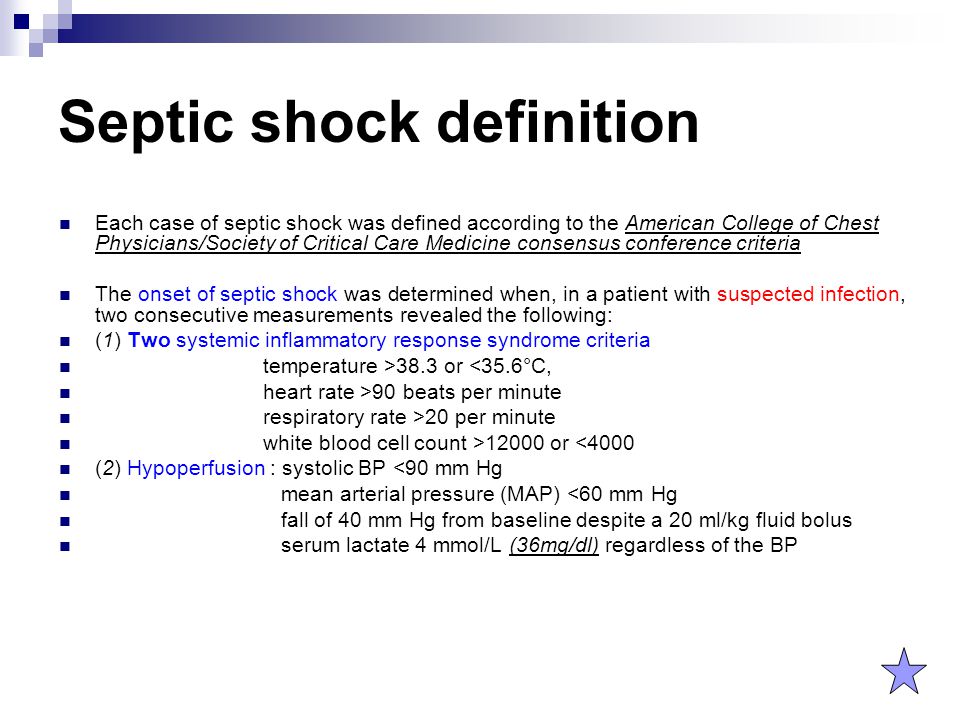 In the early (“warm”) phase, weakness progresses, dizziness is noted. At the same time, the temperature decreases to normal or subfebrile values, tachycardia increases. The mucous membranes and nail beds become bluish, the skin is hyperemic. Excitation is observed, consciousness can be clear or confused, psychoses, hallucinations are frequent. The average duration of the early stage is 5-8 hours, less often – up to two days. In the case of a gram-negative infection, this phase can last several minutes.
In the early (“warm”) phase, weakness progresses, dizziness is noted. At the same time, the temperature decreases to normal or subfebrile values, tachycardia increases. The mucous membranes and nail beds become bluish, the skin is hyperemic. Excitation is observed, consciousness can be clear or confused, psychoses, hallucinations are frequent. The average duration of the early stage is 5-8 hours, less often – up to two days. In the case of a gram-negative infection, this phase can last several minutes.
The late (“cold”) stage is marked by an increase or decrease in the heartbeat with a transition to bradycardia, a drop in temperature below normal, and significant difficulty in breathing. Anxiety and excitement intensifies, then gives way to adynamia, consciousness is darkened. The skin acquires an earthy hue, becomes covered with sticky cold sweat, a cyanotic-marble pattern appears on the legs, especially pronounced in the knee area. Oliguria develops, sometimes jaundice appears.
Anaerobic sepsis associated with uterine gangrene is characterized by a particularly severe course and a number of specific signs. The disease proceeds at lightning speed or acutely, accompanied by intense intractable pain in the lower abdomen, crepitus and increased pain on palpation of the uterus, gas and foul-smelling liquid from the vagina with air bubbles, bronze coloration of the skin, brown urine. The phenomena of septic shock appear already at the very beginning of the disease.
Complications
Patients who have survived an acute period may develop a severe, often fatal complication – superinfection. A significant deterioration in the quality of life or death of the patient often entails other consequences of sepsis: irreversible organ changes in the kidneys, liver, lungs, heart, brain associated with ischemia or purulent metastasis, perforation and bleeding from gastrointestinal stress ulcers, arterial thromboembolism and phlebothrombosis. Sepsis in pregnant women can cause premature birth, fetal death, encephalopathy, and cerebral palsy in the newborn.
Sepsis in pregnant women can cause premature birth, fetal death, encephalopathy, and cerebral palsy in the newborn.
Diagnostics
An obstetrician-gynecologist, therapist, resuscitator, microbiologist are involved in the diagnosis of obstetric sepsis, complicated forms require the involvement of a nephrologist, cardiologist, neurologist, hepatologist. In the course of a gynecological examination and a general examination, a septic condition can be suspected by the presence of a focus of purulent inflammation in the pelvic organs or the mammary gland, as well as signs of SIRS. The following studies are being carried out:
- Pathogen identification. Culture analysis of blood and vaginal smears can identify the infectious agent and select an effective drug to treat the infection. Bacteremia confirms the presence of a septic process. In the absence of bacteremia, a test for procalcitonin is performed to differentiate between local and generalized infection.

- Instrumental research. Ultrasound of the small pelvis and kidneys confirms (reveals) the presence of a primary purulent focus in the genitourinary organs. Ultrasound of the abdominal organs, chest x-ray, echocardiography can detect secondary abscesses in the liver, lungs, heart.
- Clinical and biochemical blood tests. A general blood test detects leukocytosis, leukopenia, a shift of the leukocyte formula to the left – values \u200b\u200bthat indirectly confirm a septic condition. Data from biochemical studies indicate violations of the water-electrolyte balance and functions of the kidneys and liver. Analysis of blood gases reveals violations of acid-base balance and respiratory failure. According to the results of the coagulogram, blood clotting disorders are determined. Plasma lactate testing can detect tissue hypoperfusion and assess the severity of shock. The immunogram testifies to disorders of immune activity.
Obstetric sepsis should be differentiated from preeclampsia, amniotic embolism and pulmonary embolism, acute infections (severe influenza, brucellosis, typhoid, malaria, miliary tuberculosis), acute pancreatitis, leukemia, lymphogranulomatosis. For differential diagnosis, it may be necessary to consult a cardiac surgeon, an infectious disease specialist, a phthisiatrician, and an oncohematologist.
For differential diagnosis, it may be necessary to consult a cardiac surgeon, an infectious disease specialist, a phthisiatrician, and an oncohematologist.
Treatment of obstetric sepsis
Therapeutic measures are carried out in the conditions of a gynecological or observational obstetric department, patients with severe forms of sepsis are transferred to the intensive care unit. The treatment is complex, includes surgical and conservative methods and is aimed at fighting infection and correcting vital functions:
- Infusion therapy. Treatment provides for the correction of homeostatic disorders (hypotension, coagulopathy, disorders of acid-base and water-salt and metabolism, BCC deficiency), restoration of tissue perfusion, detoxification. For these purposes, saline and colloidal solutions, albumin, cryoplasma, inotropes and vasopressors are introduced.
- Antibacterial therapy. It is aimed at the destruction of the infectious agent in order to block the inflammatory cascade.
 Initial treatment includes intravenous administration of a combination of broad-spectrum drugs. After the pathogen is isolated, etiotropic antibiotic therapy is started.
Initial treatment includes intravenous administration of a combination of broad-spectrum drugs. After the pathogen is isolated, etiotropic antibiotic therapy is started. - Surgical treatment. The elimination of purulent foci increases the effectiveness of intensive care and improves the prognosis. Treatment involves sanitation of primary and secondary foci – opening and emptying of abscesses, curettage, vacuum aspiration or removal of the uterus (hysterectomy).
If necessary, artificial ventilation of the lungs, enteral nutrition of the patient is carried out. Additional intensive care methods include the use of corticosteroids, surgical detoxification (plasmapheresis, hemosorption, hemofiltration) after surgical treatment of suppuration, immunotherapy.
Prognosis and prevention
In the early stages, when pronounced signs of MODS, persistent hypotension and DIC have not developed, the prognosis is favorable. With the development of septic shock, mortality can reach 65% (average – 45%).






 Because these infections are often resistant to antibiotics, they can cause rapid clinical deterioration.
Because these infections are often resistant to antibiotics, they can cause rapid clinical deterioration. These factors lead to disruption of urodynamics and create prerequisites for the development of gestational pyelonephritis and urosepsis.
These factors lead to disruption of urodynamics and create prerequisites for the development of gestational pyelonephritis and urosepsis. In 12% of patients with sepsis, there are no signs of SIRS.
In 12% of patients with sepsis, there are no signs of SIRS.
 Initial treatment includes intravenous administration of a combination of broad-spectrum drugs. After the pathogen is isolated, etiotropic antibiotic therapy is started.
Initial treatment includes intravenous administration of a combination of broad-spectrum drugs. After the pathogen is isolated, etiotropic antibiotic therapy is started.